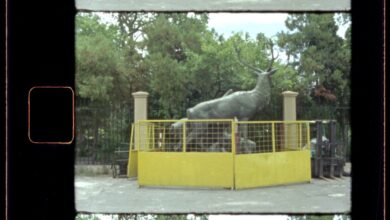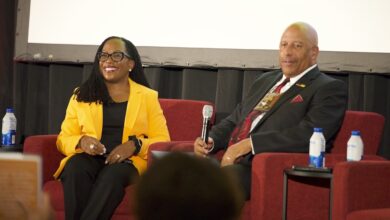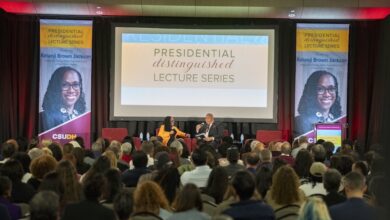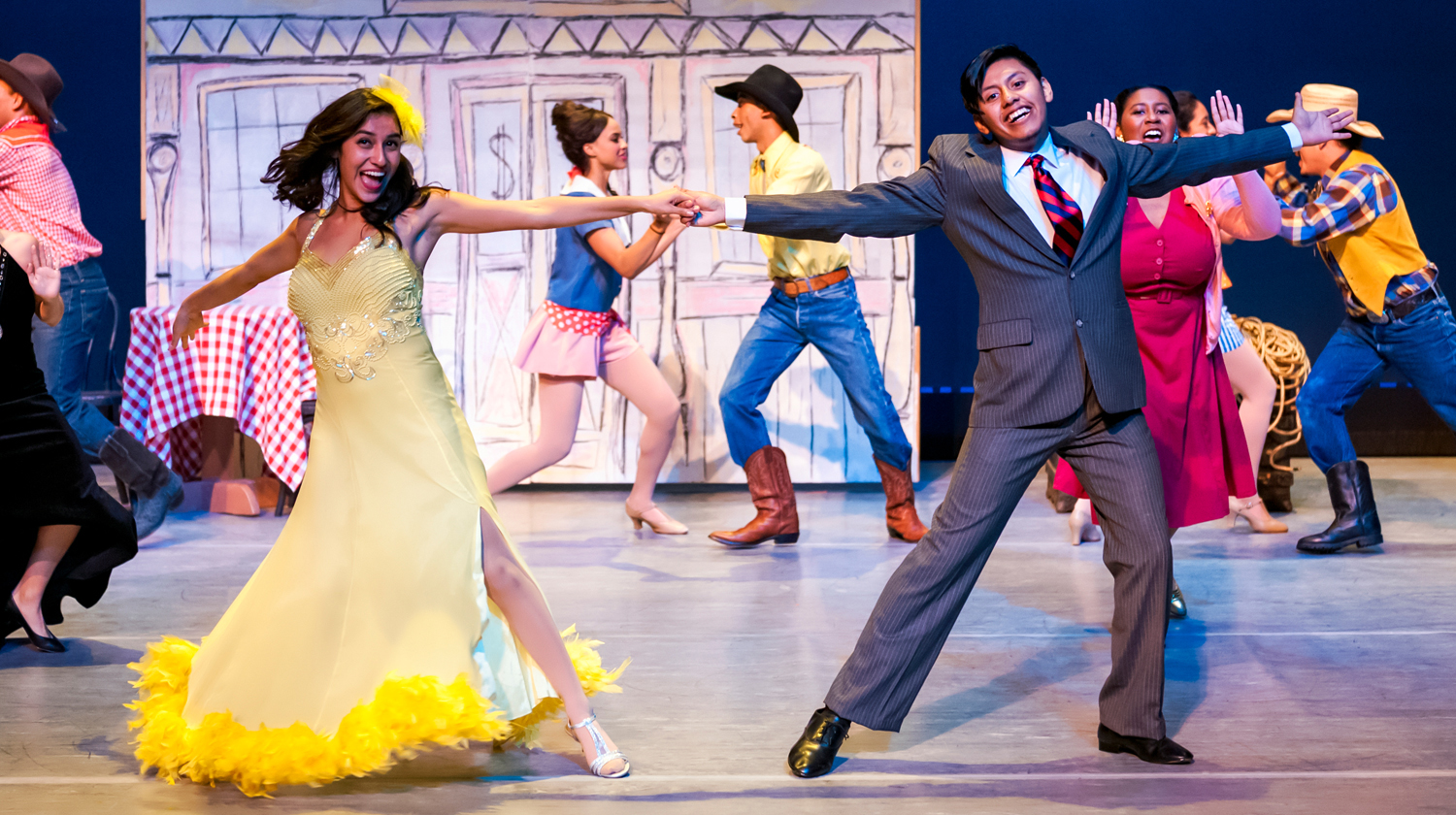
Seventeen students embarked this summer term on an academic journey that no other Toro has yet made. They represent the inaugural student cohort of CSUDH’s Occupational Therapy Doctoral (OTD) program–the first doctoral program offered in the university’s more than 60-year history.
President Thomas A. Parham welcomed the students during an orientation event on May 15 at the Loker Student Union ballroom and applauded their decision to break new ground for generations of students to follow.
“Go into your studies knowing that what you’re doing is significant and worthwhile and makes an enormous difference. Go into it knowing that your institution could not be prouder of you,” Parham said. “You are not only inheriting a legacy from all the work that has been done in the past, but you are poised to set a standard for the future because you are the first.”
Sterling Hager said he was drawn to the program for several reasons. A graduate of CSU Fullerton with a BS in kinesiology, he interned and later worked at a clinic near his home in Santa Ana with graduates of CSUDH.
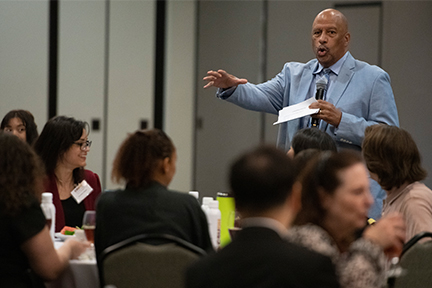
“Everything they had to say about the master’s program in OT and their exemplary work was really inspiring,” said Hager. “The more I dug into the OTD program, and after meeting the faculty during information sessions, the more I felt like this was the right fit and the kind of legacy I wanted to be a part of.”
Alyanna Paulino came to OT after graduating from UCLA with a bachelor’s in physiological sciences. She returned to her home in the San Francisco Bay Area and got certified as an EMT. “I was originally in Pre-Med but found my heart wasn’t in it. Working for a year as an EMT gave me exposure to a lot of other specializations in healthcare,” she said.
“CSUDH had such a great institutional reputation for the quality of the field work their students perform,” Paulino said. “Listening to patients talk about how OT had improved their lives really showed me that as a discipline, it offered so much of what I was passionate about.”
One of the biggest challenges in creating the OTD program related to institutional mission, said Dr. Ken O’Donnell, Vice Provost and Accreditation Liaison Officer. “The CSUs were created as a system mostly for baccalaureate and master’s degrees. Doctoral programs require a legal exception at the state level,” O’Donnell said.
“You need a more vigorous research agenda than you did before, and faculty have to be ready to pull students up to a level that they may have been at themselves not that long ago. That perspective shift is really the hard part.”

O’Donnell said the OTD is just one of several additional doctoral programs CSUDH will launch in the next few years, including a doctorate of education (Ed.D) program in Summer 2024, and a Doctorate of Nursing (DNP) in 2025.
Getting the OTD program up and running took years of work and involved partners up and down the state, said Dr. Terry Peralta-Catipon, OT department chair and associate professor. Peralta spearheaded curriculum development for the program and was involved throughout the process.
“Working with the CSU Chancellor’s Office, we began by drafting AB 289, sponsored by State Assemblymember Richard Bloom and signed into law by Governor Newsom in 2019,” Peralta-Catipon said. “Then we had to work right through the pandemic, developing the curriculum and securing regional accreditation through WASC and professional accreditation through ACOTE. It’s been a very busy five years!”
Sheree Schrager, dean of Graduate Studies and Research, worked with faculty and graduate program directors to establish institutional learning outcomes for the doctoral program, and program director Eric Hwang partnered with Peralta to ensure the doctoral program was distinct from the existing Master of Science in Occupational Therapy.
Mi-Sook Kim, dean of the College of Health, Human Services and Nursing, said the OTD program represented a significant milestone. “It not only provides a pathway for students from diverse backgrounds to achieve the highest level of expertise in OT, but also contributes to the advancement of the field.”
Part of that advancement lies in the contributions the OTD can make in creating greater diversity in the field, said Sheryl Ryan, an assistant professor and capstone coordinator for the program.

“We’re currently in a moment where there’s a lot of change happening in the profession,” Ryan said. “We want to build greater cultural, sexual, and gender diversity so that future leaders in the field can break new ground, and I think CSUDH is uniquely placed to be a conduit for that.”
Dr. Abbie Bryant serves as field work coordinator for the program and previously worked alongside CSUDH interns and graduates. “They’re just so humble and willing to get their hands dirty, try new things, make mistakes,” said Bryant. “We give them so much hands-on experience in our programs, and they are so supported in trying new things. That really stands out when they get into clinical practice.”
O’Donnell said he was proud of all the hard work that went into creating the OTD program, and that he’s excited to see the impact it has for CSUDH and beyond.
“This is the kind of curriculum that you get excited about because it will make a difference. This is occupational therapy informed by social justice and a commitment to diversity and excellence. This is good for the world, not just for our university.”

